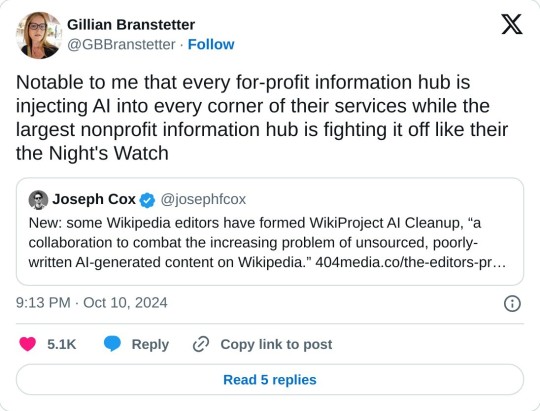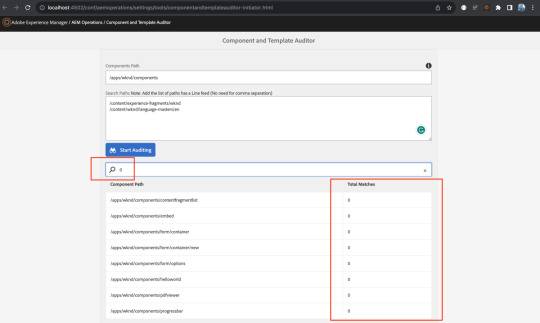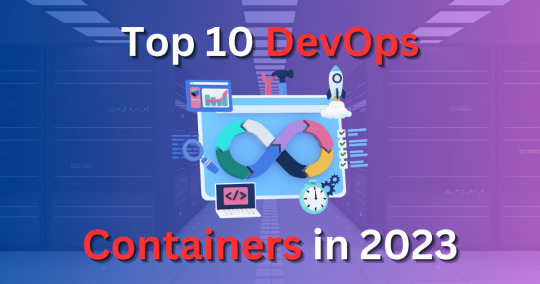#repository manager
Explore tagged Tumblr posts
Text
Have you seen the new package? It's on synaptic. It's literally on flatpack. It's on pacman with extra. It's on AUR. You can watch it on AUR. You can go to AUR and watch it. Log onto AUR right now. Go to AUR. Dive into AUR. You can AUR it. It's on AUR. AUR has it for you. AUR has it for you.
155 notes
·
View notes
Text
coworker who hasn't responded to three of my other emails just called me to complain because i sent an email to her + one of her on-staff managers and she thinks i should have emailed them separately
#forgive me oh wise one for assuming your staff manager could simply ignore the email attachment not meant for her#like look lady. if you want individual emails maybe try replying to me every once in a lifetime#it was a collection of reports. that i post publicly anyway. for everyone to see. in a repository.#then i send a message encouraging everyone to review the reports#why does it fucking matterrrrer#people are such insane control freaks at this godforsaken company for no reason#and she was like ''i like to keep things very private in my center...'' girl the fuck#these are reports that are shared. with the entire company. What
3 notes
·
View notes
Text
#Manage Your Digital Assets#Wealth Transfer#Assets For Future Generations#Manage Your Legacy Planning#Centralized Digital Repository#Preserving Your Family's Legacy#Financial Legacy Planning#Transferring Financial Assets
2 notes
·
View notes
Text
Toward an Integrated Resource Hub: The Case for a Curated Master List of Publicly Available Research Databases
Abstract Despite the exponential growth of publicly available scientific and scholarly databases, the lack of centralized, user-friendly access to these resources remains a persistent barrier for students, researchers, educators, and independent learners. This paper outlines the rationale for curating a comprehensive, categorized list of publicly accessible databases across scientific and…
#academic resources#academic tools#data curation#data discoverability#data management#data repositories#database index#digital scholarship#educational technology#information access#interdisciplinary research#knowledge accessibility#metadata#open data#public datasets#research databases#research support#scholarly communication#science infrastructure#user experience
0 notes
Text
Toward an Integrated Resource Hub: The Case for a Curated Master List of Publicly Available Research Databases
Abstract Despite the exponential growth of publicly available scientific and scholarly databases, the lack of centralized, user-friendly access to these resources remains a persistent barrier for students, researchers, educators, and independent learners. This paper outlines the rationale for curating a comprehensive, categorized list of publicly accessible databases across scientific and…
#academic resources#academic tools#data curation#data discoverability#data management#data repositories#database index#digital scholarship#educational technology#information access#interdisciplinary research#knowledge accessibility#metadata#open data#public datasets#research databases#research support#scholarly communication#science infrastructure#user experience
0 notes
Text
A group of Wikipedia editors have formed WikiProject AI Cleanup, “a collaboration to combat the increasing problem of unsourced, poorly-written AI-generated content on Wikipedia.” The group’s goal is to protect one of the world’s largest repositories of information from the same kind of misleading AI-generated information that has plagued Google search results, books sold on Amazon, and academic journals. “A few of us had noticed the prevalence of unnatural writing that showed clear signs of being AI-generated, and we managed to replicate similar ‘styles’ using ChatGPT,” Ilyas Lebleu, a founding member of WikiProject AI Cleanup, told me in an email. “Discovering some common AI catchphrases allowed us to quickly spot some of the most egregious examples of generated articles, which we quickly wanted to formalize into an organized project to compile our findings and techniques.”
9 October 2024

28K notes
·
View notes
Text
Streamline Your Business Operations with PDQ Docs: Centralized Document Management Software
In today’s business environment, managing documents efficiently is crucial for smooth operations. With an increasing volume of digital content, organizations need a robust solution to ensure documents are easily accessible, well-organized, and secure. Centralized document management software like PDQ Docs offers an effective way to address these challenges, providing businesses with a unified platform to manage their documents with ease. By centralizing document storage, retrieval, and collaboration, businesses can streamline operations, improve productivity, and ensure greater security.
What is Centralized Document Management Software?
Centralized document management software refers to a system that consolidates all digital documents and files into one secure, accessible platform. Rather than storing documents in disparate systems or physical locations, businesses can centralize their files into one organized, easy-to-manage repository. With this system, users can access, edit, share, and collaborate on documents from a single interface, ensuring consistency and efficiency across the organization. PDQ Docs is a leading example of centralized document management software that helps businesses organize their documents effectively while offering easy access and improved workflow.

How PDQ Docs Improves Document Management
PDQ Docs simplifies document storage and retrieval by offering a central location where all files are organized and indexed. One of the primary advantages of centralized document management is the ability to search for and retrieve documents quickly. With PDQ Docs, businesses can tag documents with keywords, categories, and metadata, ensuring that files can be located in just a few clicks. Whether it’s a contract, report, or an internal memo, finding documents becomes an efficient process, eliminating the frustration of searching through multiple folders or systems.
Security and Compliance with PDQ Docs
Another significant benefit of centralized document management software is the enhanced security it provides. With PDQ Docs, sensitive information is securely stored in a centralized, encrypted system. Access controls can be set to ensure that only authorized personnel can view or edit specific documents, minimizing the risk of data breaches. This is particularly important for businesses in regulated industries, such as healthcare and finance, where compliance with legal requirements and data protection regulations is paramount.
Why Choose PDQ Docs for Centralized Document Management?
When looking for centralized document management software, PDQ Docs stands out due to its user-friendly interface and powerful features. The software is designed to be intuitive, making it easy for businesses to implement without requiring extensive training. Whether you are a small business or a large corporation, PDQ Docs offers scalable solutions that can grow with your organization’s needs.
Conclusion
Centralized document management software is essential for businesses looking to improve efficiency, collaboration, and security. With PDQ Docs, you can streamline document storage and retrieval, enhance team collaboration, and ensure the security of sensitive information. By centralizing your documents, you’ll have better control over your files, ensuring that your team can access the right documents when needed. Whether you are looking to improve internal workflows or ensure regulatory compliance, PDQ Docs provides a comprehensive solution that will help your business operate more effectively.
#centralized document management software#document management system#digital document storage#enterprise document management#file organization software#document sharing solutions#document retrieval#centralized repository#document archiving#data compliance#document indexing#paperless office
0 notes
Text
Integrating Security Testing into Asset Management Workflows
Introduction
Asset management platforms store sensitive financial, operational, and infrastructure-related data. Ensuring security within these platforms is crucial to prevent unauthorized access, data breaches, and cyber threats. Integrating security testing into asset management workflows enhances protection while maintaining compliance with industry regulations.
Key Security Concerns in Asset Management
Data Protection: Preventing unauthorized access and encryption vulnerabilities.
Access Control: Ensuring role-based permissions and multi-factor authentication.
API Security: Safeguarding integrations against threats like SQL injection and DDoS attacks.
Compliance & Auditing: Ensuring adherence to regulations like GDPR, ISO 27001, and SOC 2.
Benefits of Integrating Security Testing
Early Threat Detection: Identifies vulnerabilities before deployment.
Automated Security Checks: Ensures continuous security validation.
Reduced Risk Exposure: Protects critical assets from cyber threats.
Best Practices for Security Testing Integration
Implement Security Testing in CI/CD Pipelines for real-time validation.
Use Automated Tools (e.g., OWASP ZAP, Burp Suite, and SAST tools).
Perform Regular Penetration Testing to identify hidden vulnerabilities.
Conclusion
Embedding security testing into asset management test workflows strengthens platform security, minimizes risks, and ensures compliance. A proactive approach to security testing helps businesses safeguard assets while maintaining operational efficiency.
#asset management test#test asset#test asset management#test investment banking#test repository in jira#test management#jira test case management#test data management#test management tool#test management tools for jira
0 notes
Text
A declassified World War II-era government guide to “simple sabotage” is currently one of the most popular open source books on the internet. The book, called “Simple Sabotage Field Manual,” was declassified in 2008 by the CIA and “describes ways to train normal people to be purposefully annoying telephone operators, dysfunctional train conductors, befuddling middle managers, blundering factory workers, unruly movie theater patrons, and so on. In other words, teaching people to do their jobs badly.” Over the last week, the guide has surged to become the 5th-most-accessed book on Project Gutenberg, an open source repository of free and public domain ebooks. It is also the fifth most popular ebook on the site over the last 30 days, having been accessed nearly 60,000 times over the last month (just behind Romeo and Juliet).

Link to the Guide at Project Gutenberg can be found here
A Wikisource entry can be found here.
Mirrors can be found here, here, here, here and here.
9K notes
·
View notes
Text
How to Secure your API key in Postman
API “Application Programming Interface” is the bedrock of all system applications. Without an API it will be impossible for the backend logic of an application to communicate with the frontend. API also makes it possible for an application to make a call or send a request to another application. In this article, I will show you how to Configure Postman for a Secure API key Authentication. You can…

View On WordPress
#Api intergration#Api management#APIs#Backup Repository#code#environment#key#key authentication#postman#Repository#security#Windows 10#Windows Server
0 notes
Text
3 Things Your Company Can Do With Metadata
Metadata is data that describes data, and it’s used in a variety of digital processes involving analytics. Large companies often use automated metadata management systems to keep track of information across huge databases, but even if you don’t use automated metadata management, metadata is still important for business.
If you’re unsure of how metadata applies to you, below are three things your company can do with it:
1. Segmenting Customers
When organizing customer data, segmenting customers into groups is often a good idea. This allows your marketing team to get a better idea of which groups of customers are interested in which products. With this information, your business can target different customers with personalized marketing and advertising to increase sales.
To do this, you will need to collect metadata and enter it alongside customer profiles after a sale. Always make sure to get consent before collecting and using customer data.
2. Organize Databases More Efficiently
As mentioned above, many large companies use metadata to organize large volumes of information. Databases containing product information, customer records and more can quickly become an unorganized mess when working with hundreds of thousands of pieces of data, and unorganized data can lead to a loss in productivity.
By using metadata to tag different pieces of information, you can then organize and classify this information for faster recall in the future. This can also be helpful if you plan to use contextual search functionality in a database.
3. Improve Data Reporting Accuracy
Metadata can also potentially improve accuracy in data reporting. When dealing with a large amount of unorganized data, you may end up missing something during an analysis. If you don’t have your data tagged and cataloged, it can be difficult to conduct an audit without starting your analysis all over again from the beginning.
By tagging data with metadata, you can compare the results of your analysis against your metadata. If the numbers match, you can have confidence in your analysis. If they don’t match, you can quickly determine what was missed to conduct a faster audit.
Read a similar article about data privacy management software here at this page.
#automated metadata management#data monitoring software#business intelligence software#data repository
0 notes
Text
AEM Component and Template Auditor
The "Component and Template Auditor" allows you to analyze your project, identifying components and templates with zero references. This knowledge empowers you to make informed decisions regarding whether to keep or remove them.
Problem Statement: How can we effectively assess whether the components and templates within our project structure are actively used on web pages? This knowledge is crucial for making informed decisions regarding component and template maintenance. Introduction: When organizations undertake AEM upgrades or migrations, they often introduce new components and templates following revised project…

View On WordPress
#Adobe Best Practices#Adobe Recommendations#AEM#AEM Upgrades#Component and Template Management#Component Audit#Component Cleanup#Component Maintenance#Component Optimization#Development Tools#Git Repository#Migration Strategies#Project Maintenance#Project Structure#Template Audit#Template Management#Unused Components#Version Control#Web Development#Web Page References
0 notes
Text
Top 10 DevOps Containers in 2023
Top 10 DevOps Containers in your Stack #homelab #selfhosted #DevOpsContainerTools #JenkinsContinuousIntegration #GitLabCodeRepository #SecureHarborContainerRegistry #HashicorpVaultSecretsManagement #ArgoCD #SonarQubeCodeQuality #Prometheus #nginxproxy
If you want to learn more about DevOps and building an effective DevOps stack, several containerized solutions are commonly found in production DevOps stacks. I have been working on a deployment in my home lab of DevOps containers that allows me to use infrastructure as code for really cool projects. Let’s consider the top 10 DevOps containers that serve as individual container building blocks…

View On WordPress
#ArgoCD Kubernetes deployment#DevOps container tools#GitLab code repository#Grafana data visualization#Hashicorp Vault secrets management#Jenkins for continuous integration#Prometheus container monitoring#Secure Harbor container registry#SonarQube code quality#Traefik load balancing
0 notes
Text
Toward an Integrated Resource Hub: The Case for a Curated Master List of Publicly Available Research Databases
Abstract Despite the exponential growth of publicly available scientific and scholarly databases, the lack of centralized, user-friendly access to these resources remains a persistent barrier for students, researchers, educators, and independent learners. This paper outlines the rationale for curating a comprehensive, categorized list of publicly accessible databases across scientific and…
#academic resources#academic tools#data curation#data discoverability#data management#data repositories#database index#digital scholarship#educational technology#information access#interdisciplinary research#knowledge accessibility#metadata#open data#public datasets#research databases#research support#scholarly communication#science infrastructure#user experience
0 notes
Text
What is Nexus Repository?
A Nexus Repository, often referred to as "Nexus," is a popular type of repository manager used in software development and DevOps practices. It serves as a central hub for storing and managing binary artifacts, dependencies, and other components used in the software development lifecycle.

It can be used for various purposes, including:
Artifact Storage
Dependency Management
Proxying Remote Repositories
Security and Access Control
Repository Management
Promotion and Staging
Artifact Search and Discovery
Integration with Build Tools
Artifact Cleanup and Management
Learn more about Nexus: An Open-Source Repository in our blog.
0 notes